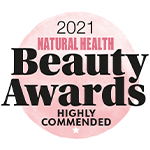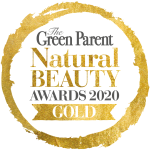Let’s explode some commonly held myths about hand-washing. Here are all the facts you need about how to wash your hands properly:
Myth: Hand soap without an antimicrobial agent is not effective.
Fact: Studies have shown that antimicrobial soaps are only slightly more effective than regular soaps.1 2 3 4 5 The most important aspect of hand washing is the action of breaking up the layers of fats on the hands (done with soap). This fat can entrap bacteria, so by removing some of it, bacteria are also removed. Both antimicrobial and regular soaps will work to remove this layer. Antimicrobial soaps can reduce bacteria further, but for the most part, the soap is not in contact with bacteria long enough to kill them.
Myth: People can get germs from using the same bar soap as other people.
Fact: Research has shown that bacteria do not readily transfer from one person to another by soap.6 7 It is likely that any bacteria picked up from bar of soap are washed away when you rinse your hands.
Myth: All bacteria on the hands are bad bacteria.
Fact: There are bacteria on everyone’s hands that are actually helpful. There are two different types: resident bacteria and transient bacteria. Resident bacteria are bacteria that normally live on your skin, these bacteria generally do not make people sick. They help keep the numbers of transient bacteria (bacteria that are not naturally occurring on hands and are the result of some sort of contamination) in check, by competing with them.8 When fewer resident bacteria are present on people’s hands, the number of transient bacteria can soar. Your skin is its own “biome” which needs to be kept healthy, so that breaks in the skin do not lead to infection.9
Myth: The hotter the water you use for handwashing, the better.
Fact: There is no research to prove that higher temperatures improve hand washing.10 Hand washing water is not hot enough to kill bacteria. However, hotter water is more likely to cause excessive drying of the skin. It is harder to remove bacteria from dry skin because of extra cracks and grooves, and dry skin can make hand washing painful.11 As a rule, the best temperature to wash hands is the warmest temperature that you find comfortable.
Myth: Hot air hand dryers are the most sanitary way to dry your hands.
Fact: Hot air hand dryers can actually increase the amount of bacteria on your hands after hand washing.12 13 14 Bacteria can grow inside of hand dryers because they provide a warm moist environment. When the dryer is turned on, the air that comes out can be filled with bacteria.15 16 17 18 Paper towels are a better way to dry your hands because they can physically remove bacteria while not adding additional bacteria to the hands.
Myth: Alcohol hand sanitizers are an acceptable substitute for handwashing.
Fact: Alcohol sanitizers have been shown to work on clean hands; when clean hands were contaminated with bacteria, alcohol hand sanitizers eliminated bacteria fairly well.19 20 It is likely, however, that sanitizers don’t work as well on hands that are dirty and greasy. For this reason sanitizers should be used only in addition to proper hand washing. It is also important to keep in mind that alcohol can dry out the skin, which can cause an increase in bacteria over time.21 22 23 There are even some studies that show that bacteria increase after the first use.24 25 Because of so much conflict between different studies on alcohol sanitizers, it is generally recommended that they only be used after hand washing or when water is not available.
Myth: There is no point in washing your hands after going to the bathroom because you need to touch the dirty doorknob on the way out.
Fact: The amount of bacteria that transfers from hands to surfaces is actually quite small.26 If someone with dirty hands touches the doorknob, only a small amount of the bacteria from dirty hands will end up on the doorknob. Of the bacteria on the doorknob, only a small amount will then transfer to your hands. Therefore, if you wash your hands and touch a doorknob with another person’s bacteria on it, your hands will still be much more clean than if you didn’t wash them at all.
Myth: As long as you wear gloves, there is no chance of getting bacteria on your hands and spreading infection.
Fact: Generally, when people wear gloves it’s actually less sanitary than when they don’t wear gloves, with the exception of when people have cuts or open sores on their hands.27 A hand-hygiene study was conducted by the Center for Disease Control and found that hand washing rates were significantly lower when gloves were worn. This is due to the fact that gloves create a false sense of cleanliness, which ultimately leads to gloves being used incorrectly and people not washing their hands well or as often as they should.28 29 After gloves are put on, bacteria on the hands increase quickly.30 If a glove is punctured, bacteria on the hands can pass to food even more easily. It is also important to remember that gloves can pick up bacteria from dirty surfaces and transfer them. For all of these reasons, hand washing is still the best way to fight the contamination of foods. If gloves are being worn, it is important to remember to change them frequently, with proper hand washing between changes.
All-natural, chemical-free soaps suitable for use on hands can be found here.
Non-greasy, purse-sized hand lotions to keep your hands from getting chapped with all that hand-washing can be found here.














